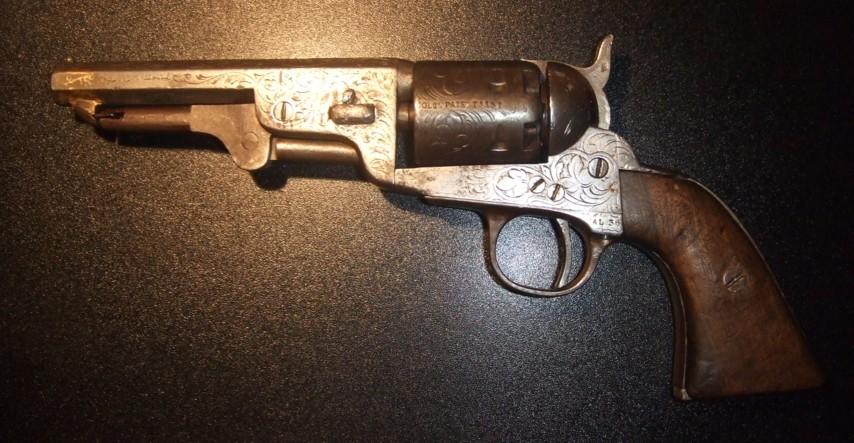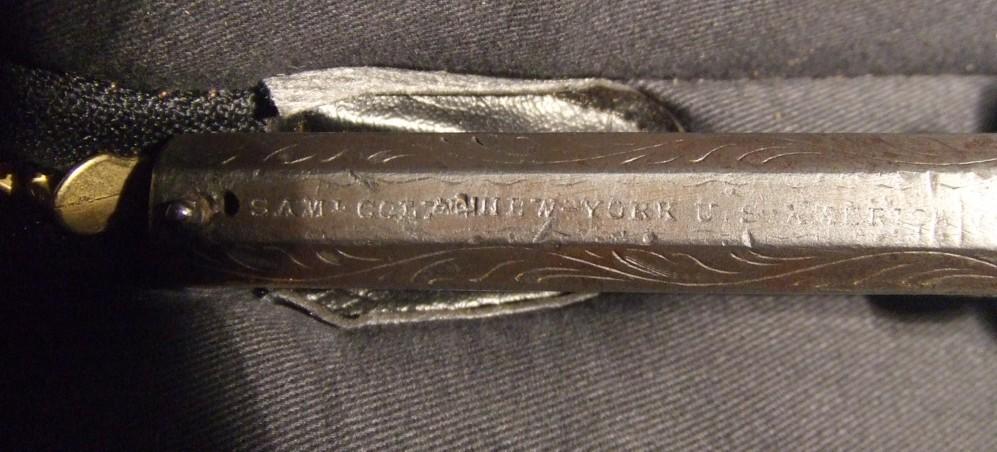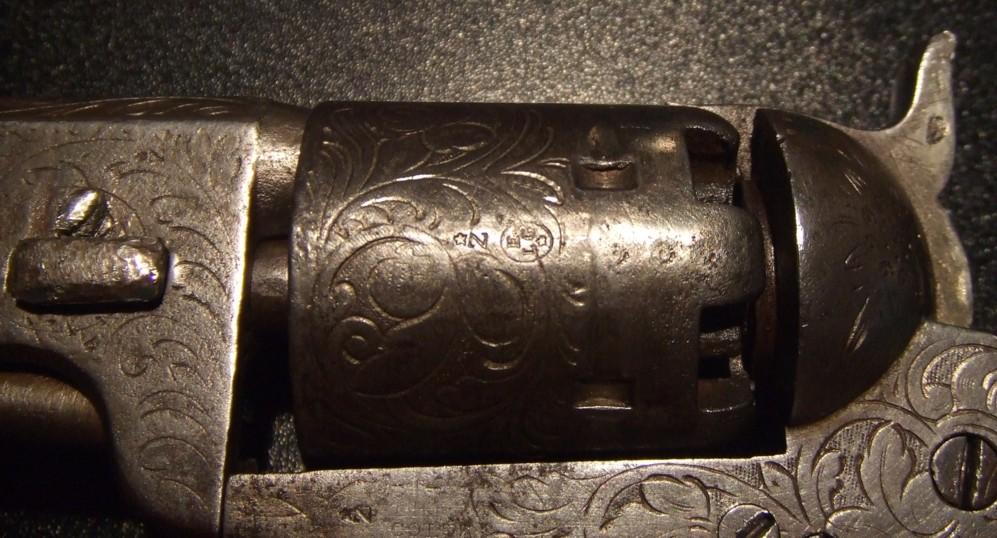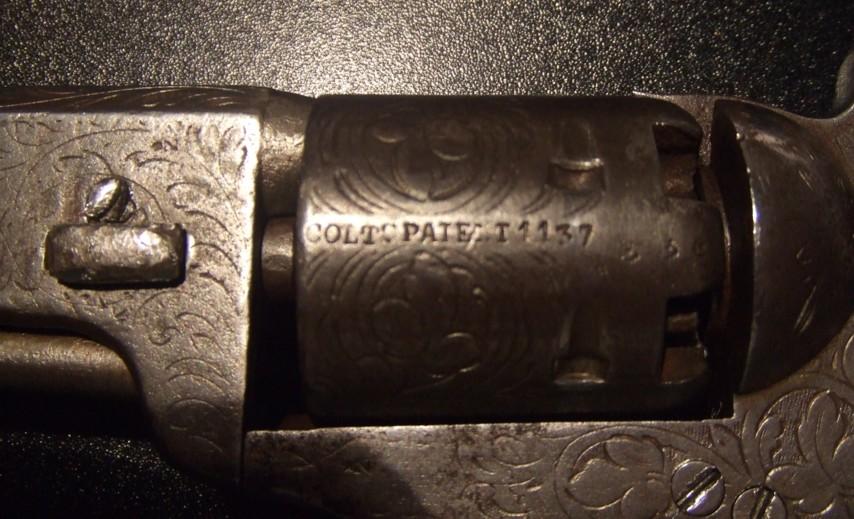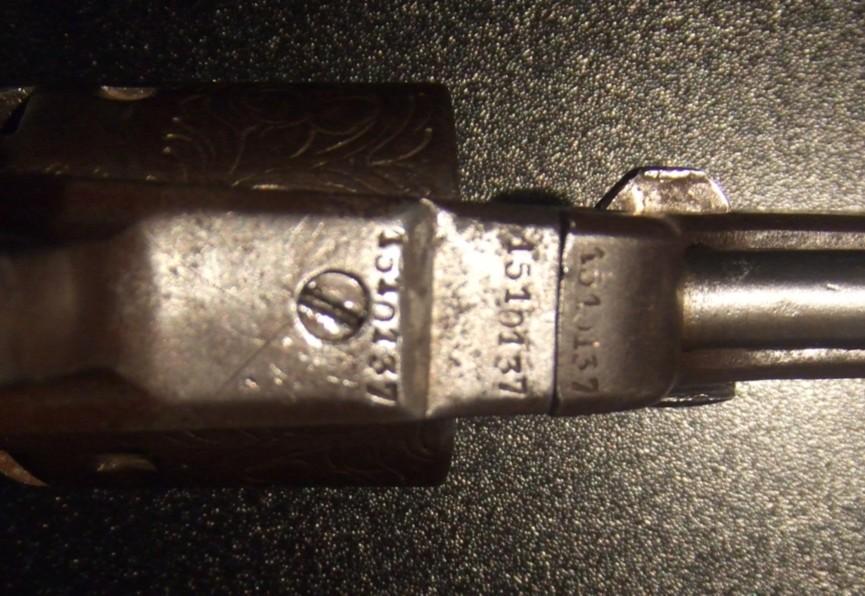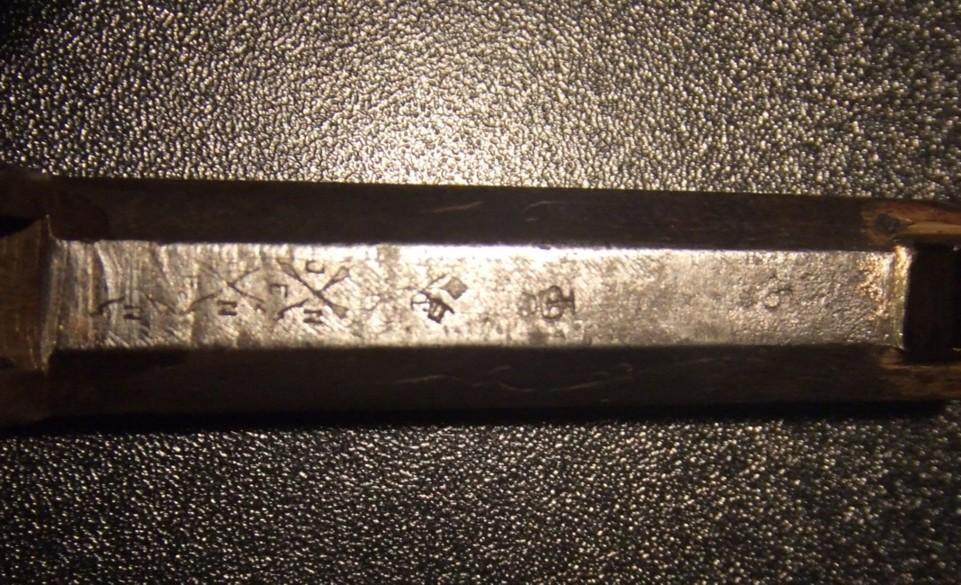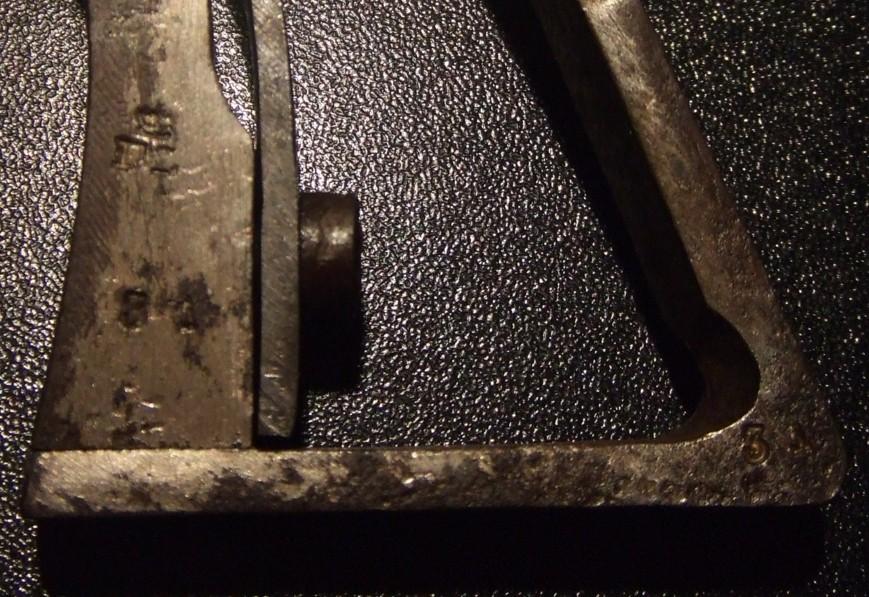Some of the most beautiful work of this craftsman, and many others, are in this book “Liège Gunmakers through their Work. 1800 - 1950”.
For more detail see: LIEGE GUNMAKERS
Jean Baptiste HANQUET
It is a
beautiful revolver belonging to a category often called "transition revolvers".
The term "Transition" applies in the strict sense to the weapons that form the
link between pepperbox and revolvers of modern design, with or without a box
frame. By extension, it is also used for revolvers of the 19th century which
still have the look of the pistols with one shot of which they are descendants.
In many countries, gunsmiths developed this type of percussion handgun, such as
Baker in Great Britain, Maynard in the USA, Devisme in France. A similar general
line can be found in their products, as well as in the specimen found here, even
if each gunmaker developed its own innovations (internal percussion at Devisme,
for example). Of course, the craftsmen of Liège were also interested in these
products.
The
revolver presented here has features that make it a luxury item: octagonal
barrel, staggered hammer, fine plates finely grated probably in walnut, engraved
carcass, shield protecting the primers, numbered chambers, calibre 44 (10,8mm).
The
manufacturer of the item is easily identified thanks to several references on
the weapon (see below the “markings” section): this is Jean Baptiste Hanquet, a
well-identified artisan on the site.
In 1853
he filed a Belgian patent for a pistol system, which may correspond to the
revolver examined here. His company was registered on the proofhouse of Liège
between 1796 and 1872, which is also in accordance with the period of
manufacture of this revolver, around 1853-1855, according to the following site
(which also indicates the calibre, dimensions and characteristics):
https://www.pistol3d.com/revolver_hanquet/hanquet.html
Markings:
Oval ELG
on star, cylinder, corresponding to the proof mark of Liège from 8 September
1846 to 11 July 1893
GM under
crown, under the barrel, not identified with certainty: perhaps the initials of
the craftsman who provided the barrel (GM for Guillaume Mariette?).
155
(serial number probably), under the barrel.
V under
crown, left side cannon and barrel, control stamp in effect from 30 December
1853 to 26 January 1877
Manufacturer's signatures: Hanquet patented (left side gun), Manufed by J B
Hanquet Liège (top gun), Hanquet (primer shield)
Lepage Frères Paris 12 rue d’Enghien, arms dealer
It was a
44 caliber percussion revolver, designed, patented and manufactured in Liège by
Jean Baptiste Hanquet between 1853 and 1855, to be resold in Paris by the
Société Lepage Frères.
Note:
An astonishing version of this revolver is known, presented in a box with two interchangeable guns of different lengths as well as a removable stick,
allowing the owner to choose a revolver or a small rifle from the
same carcass.
Chris, HPH
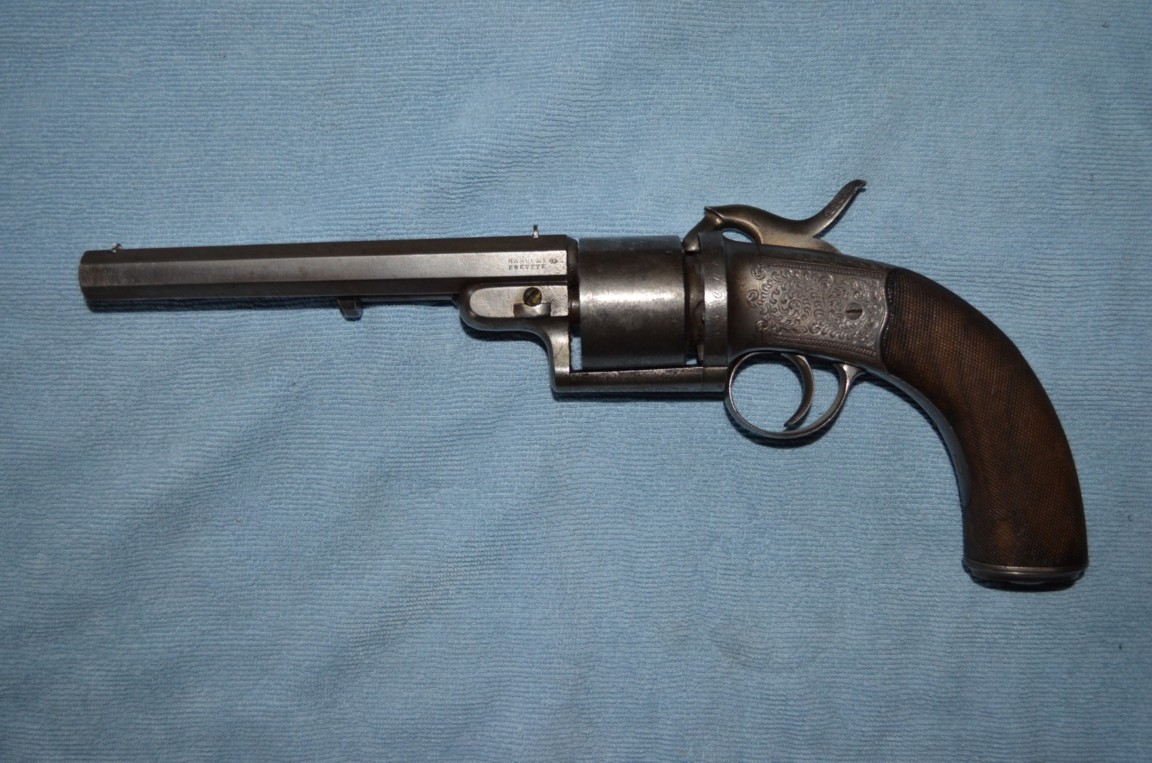
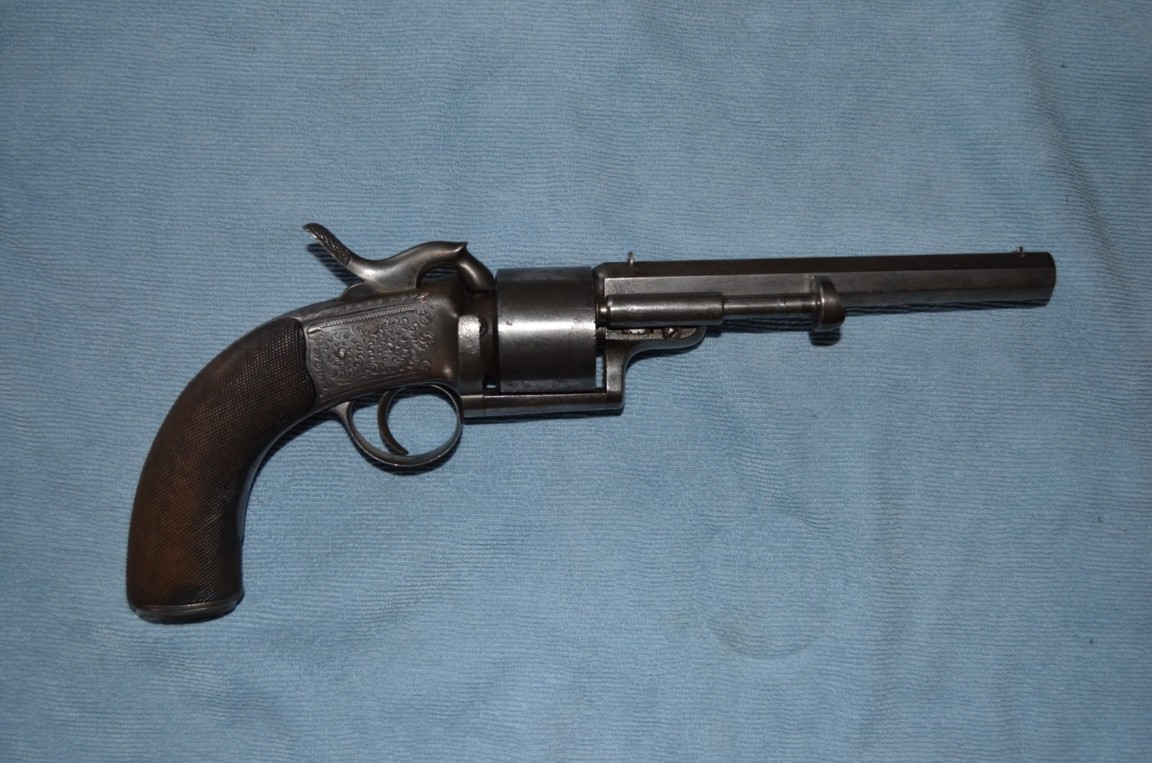
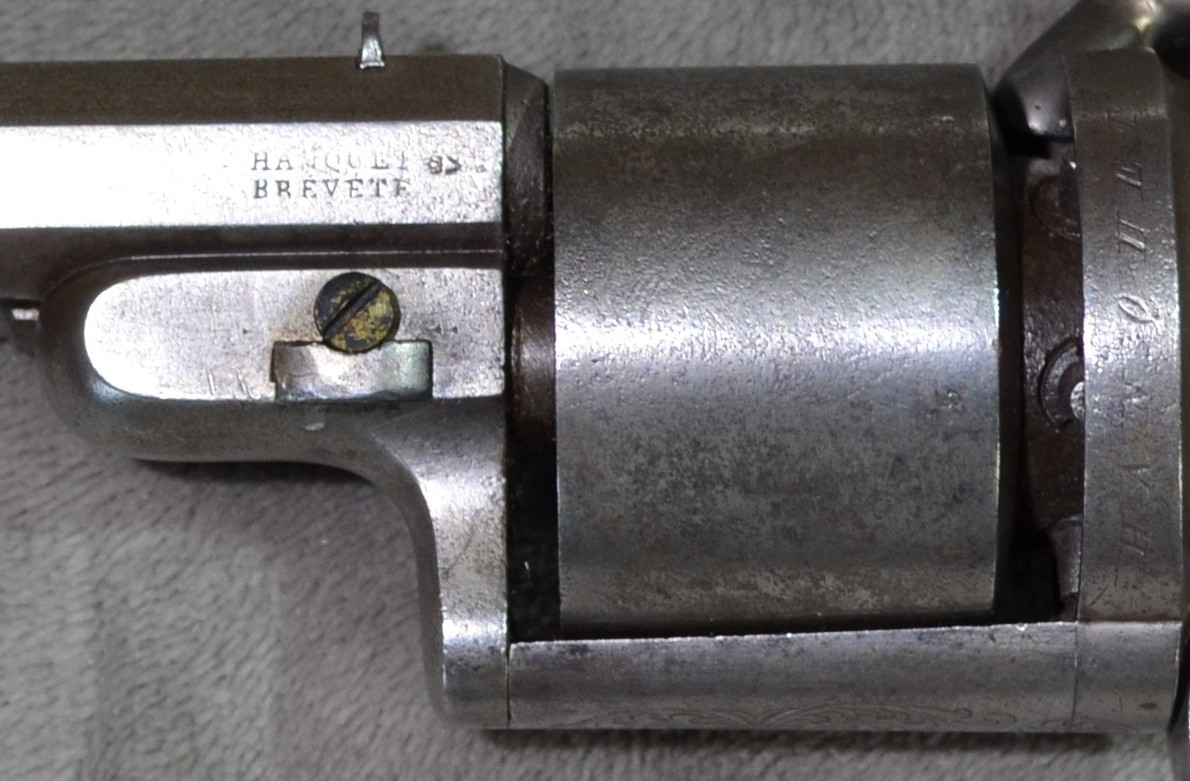
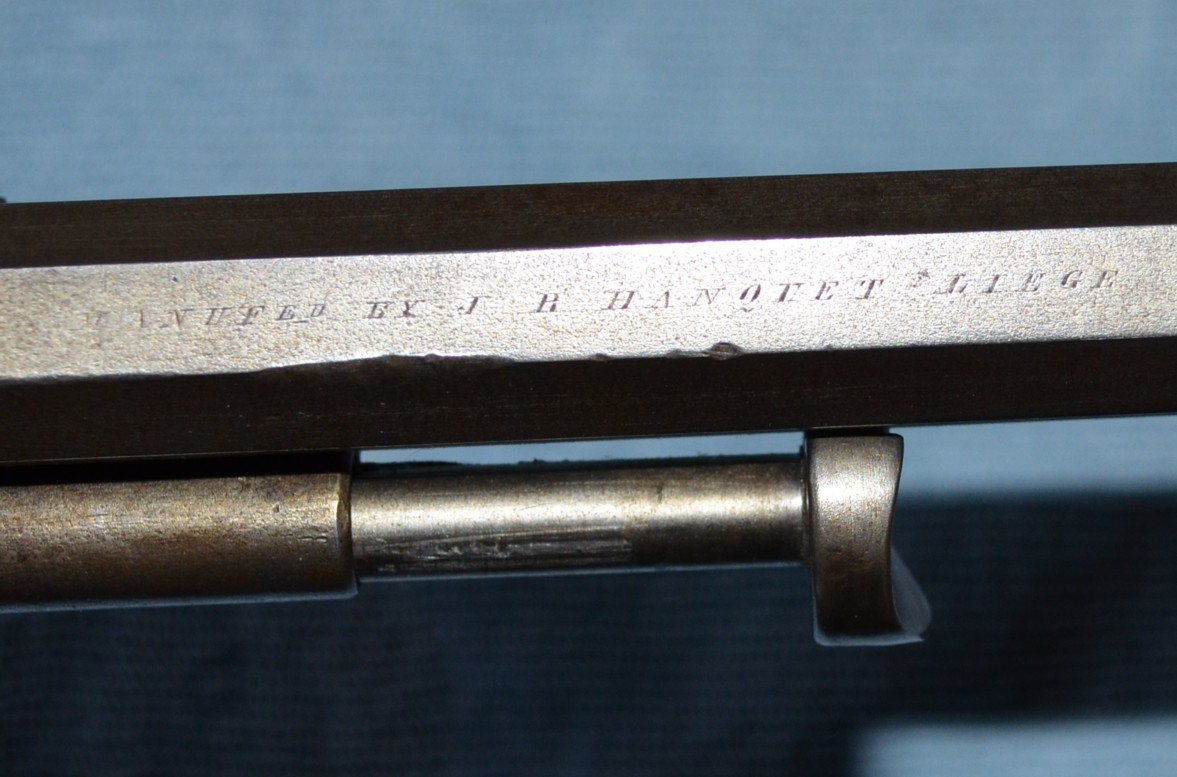
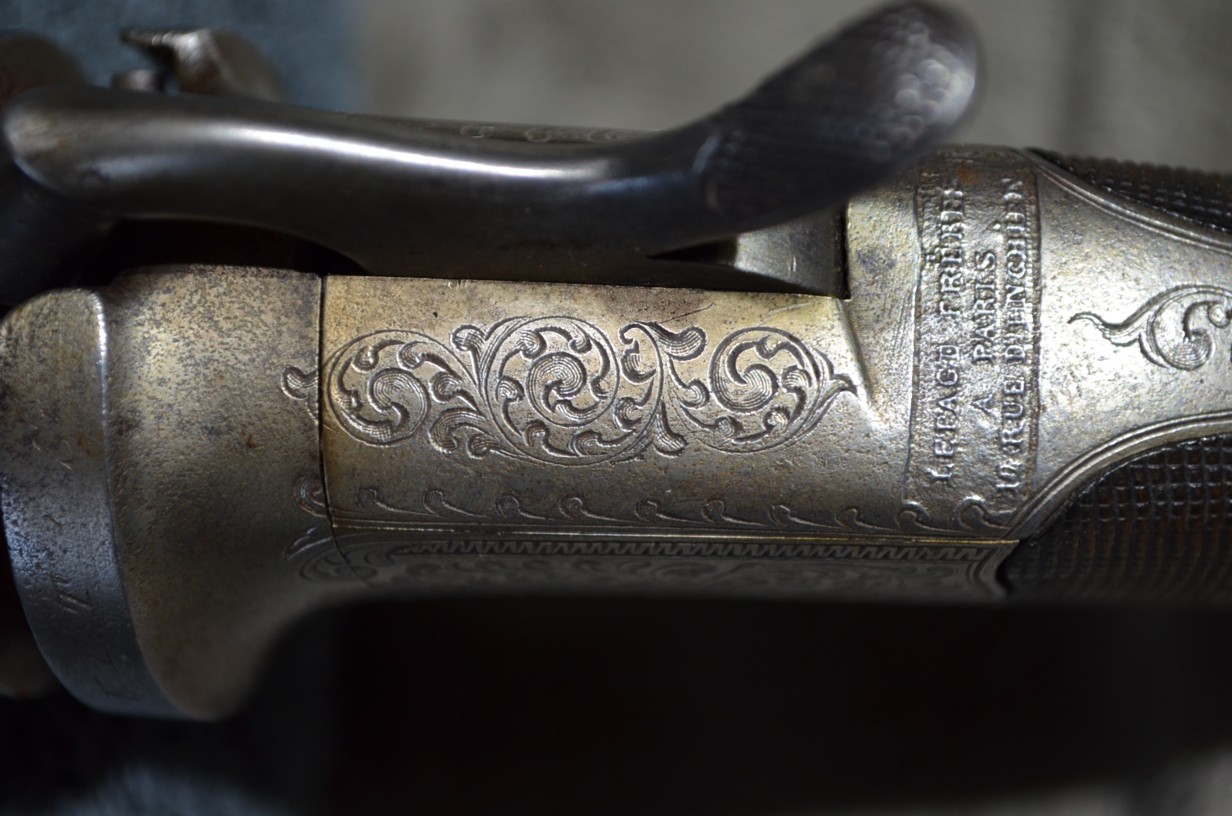
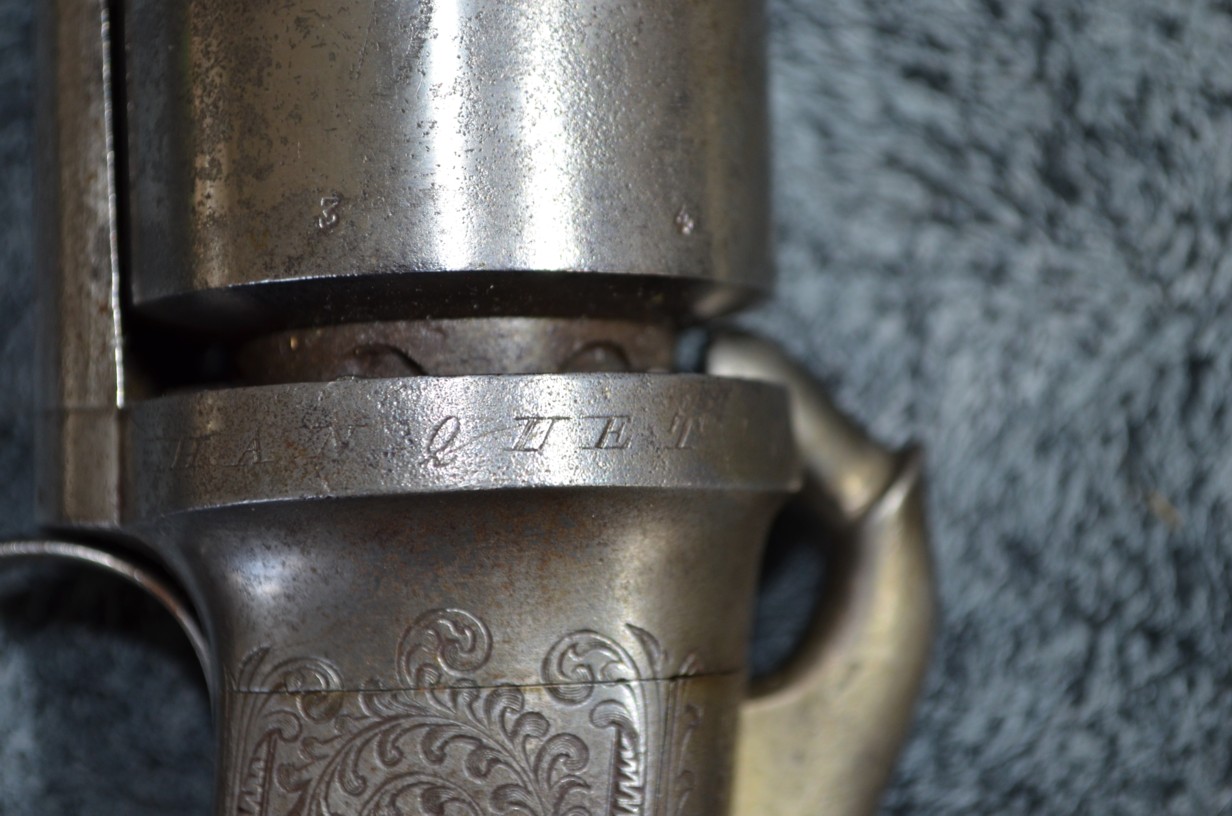
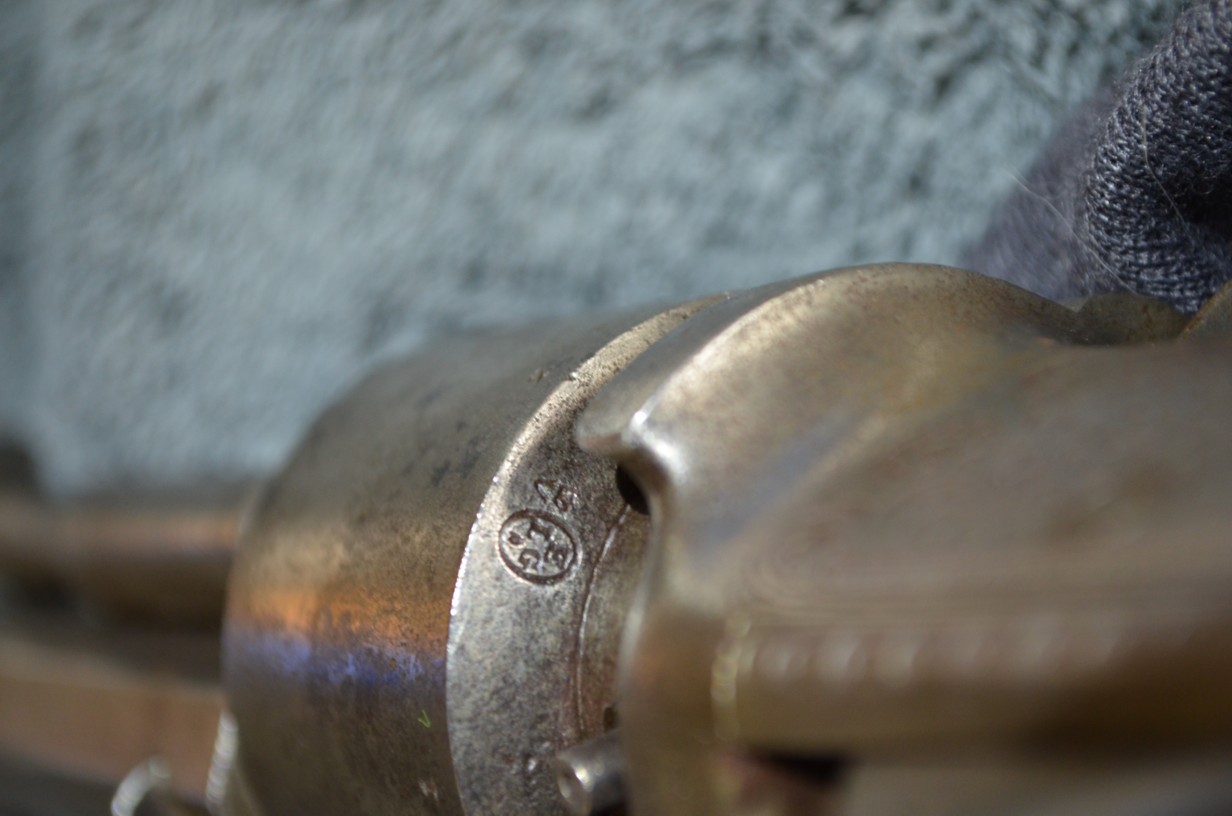
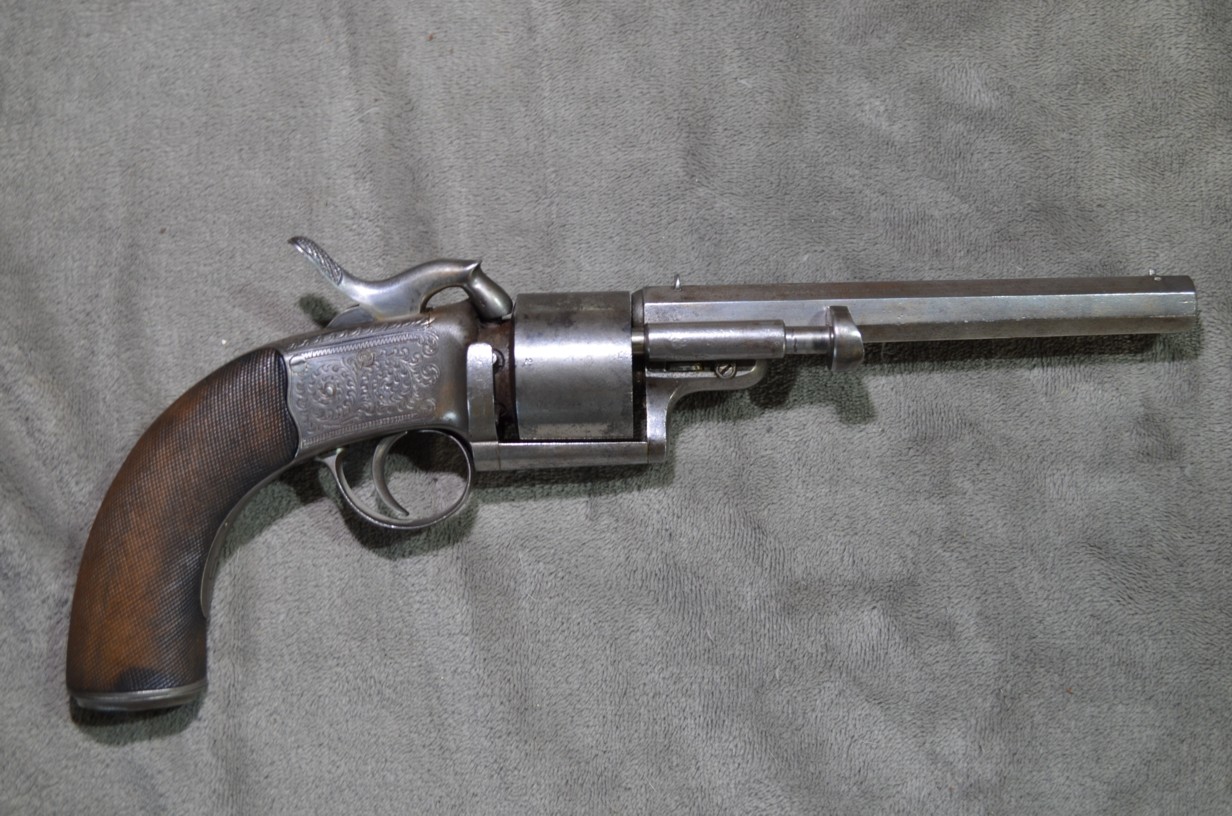
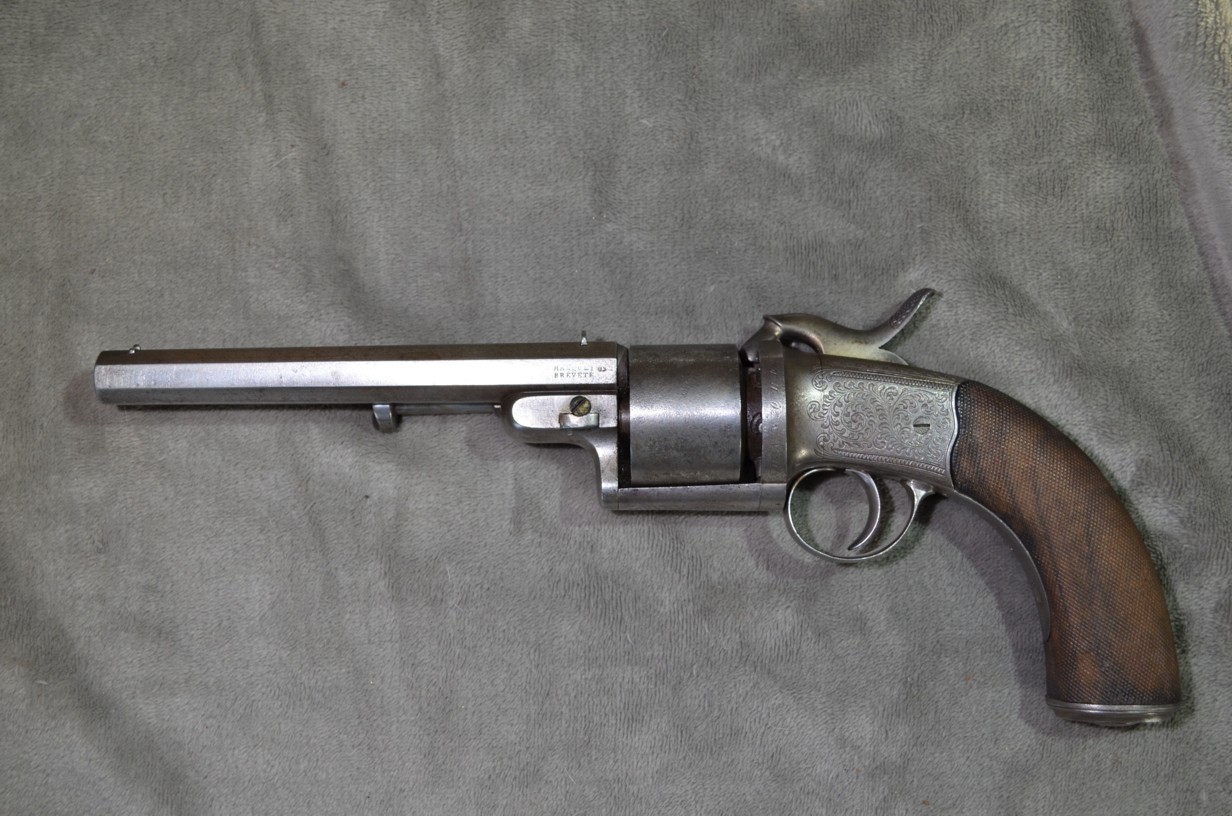
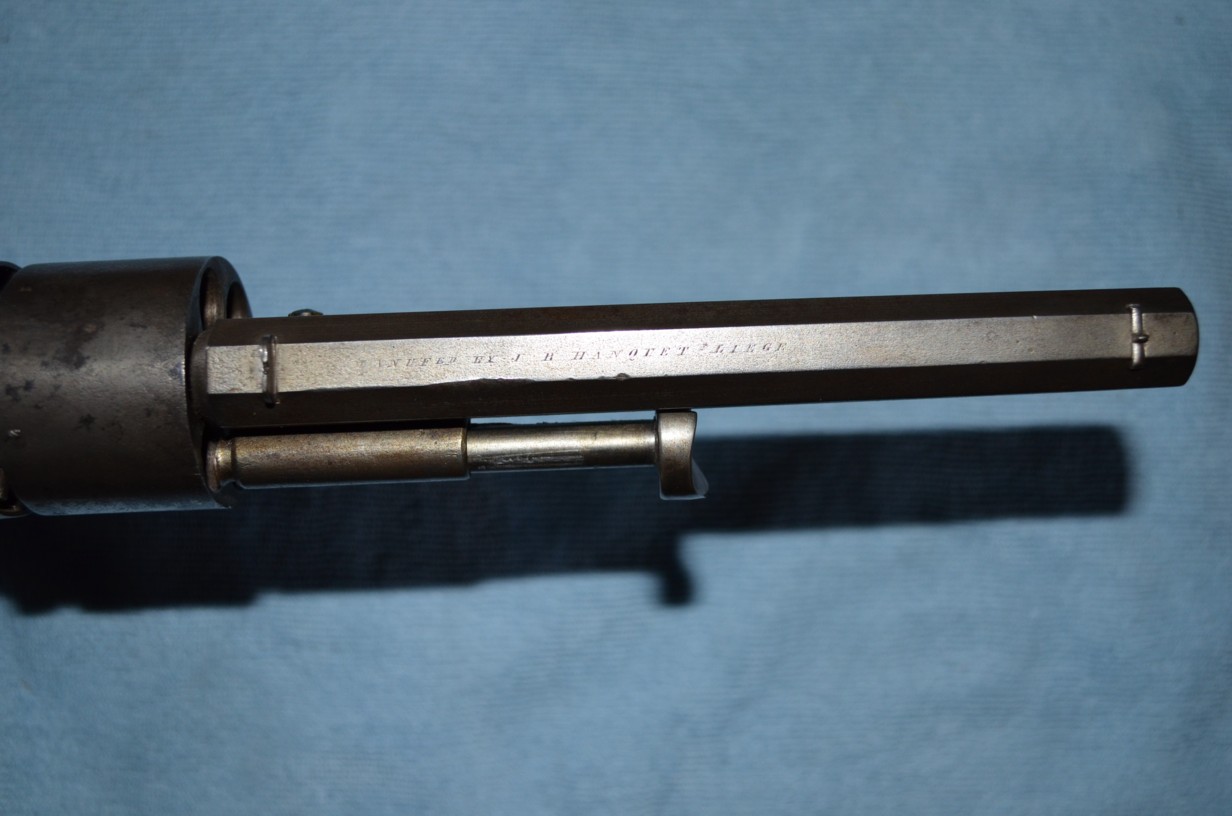
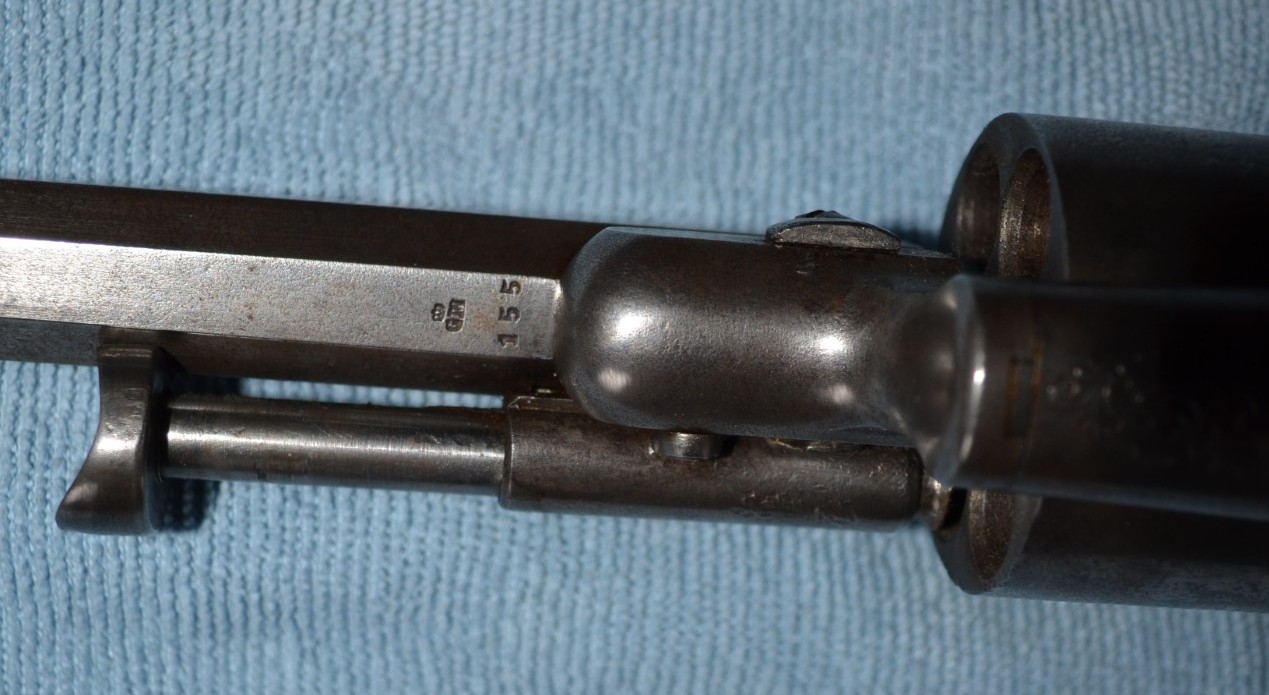
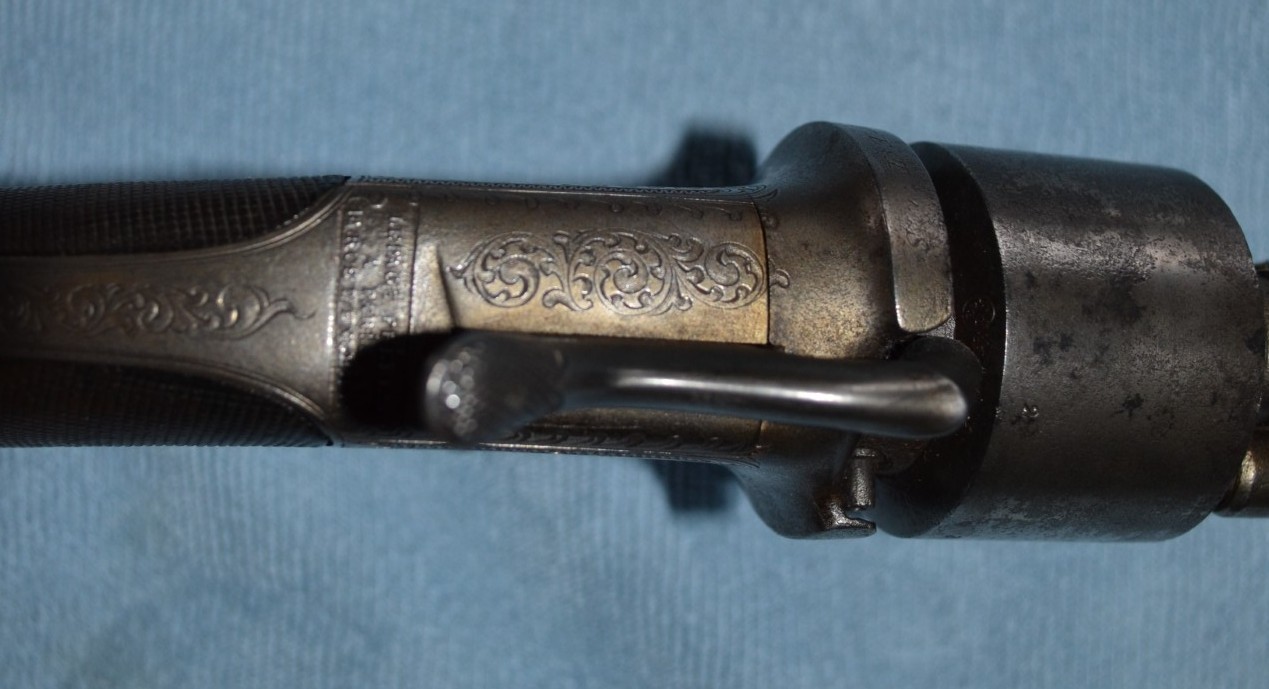
Jean Baptiste HANQUET
Made by
J.B. HANQUET of
Liege
Also marked: LEPAGE Frères a paris 12 rue d enghien
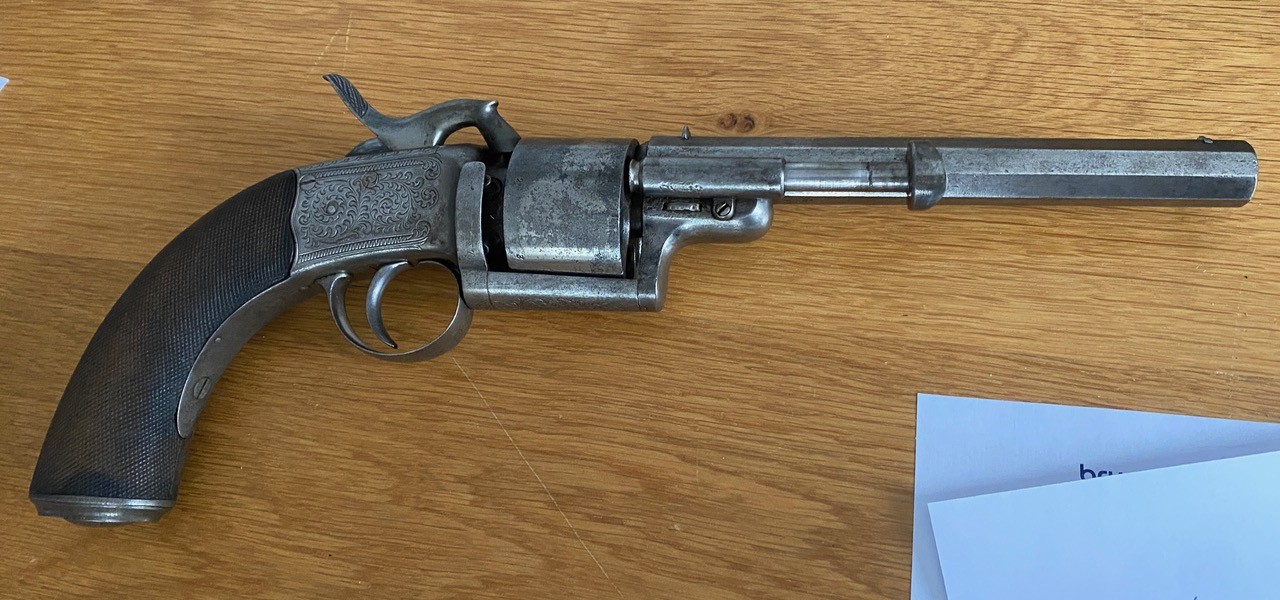

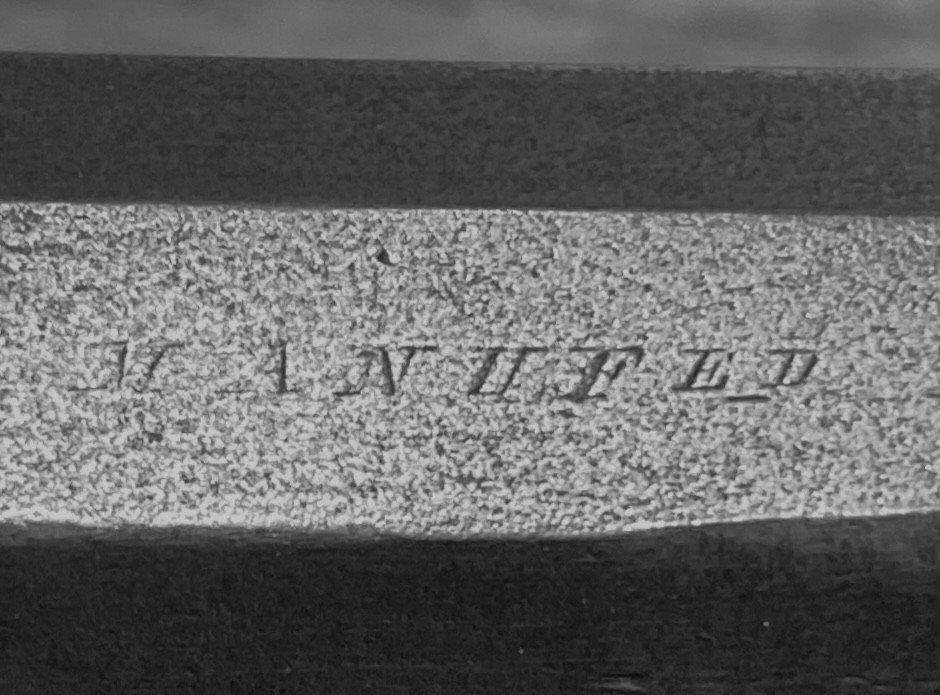
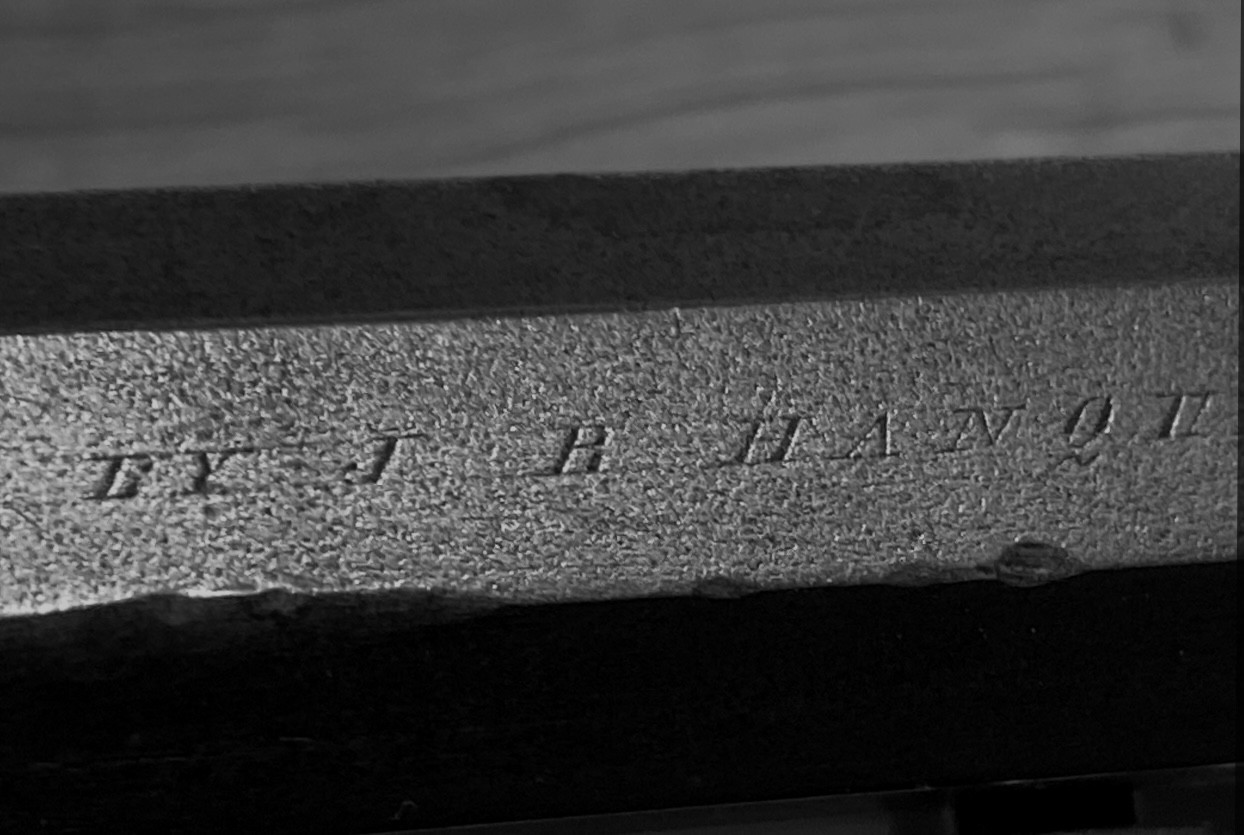
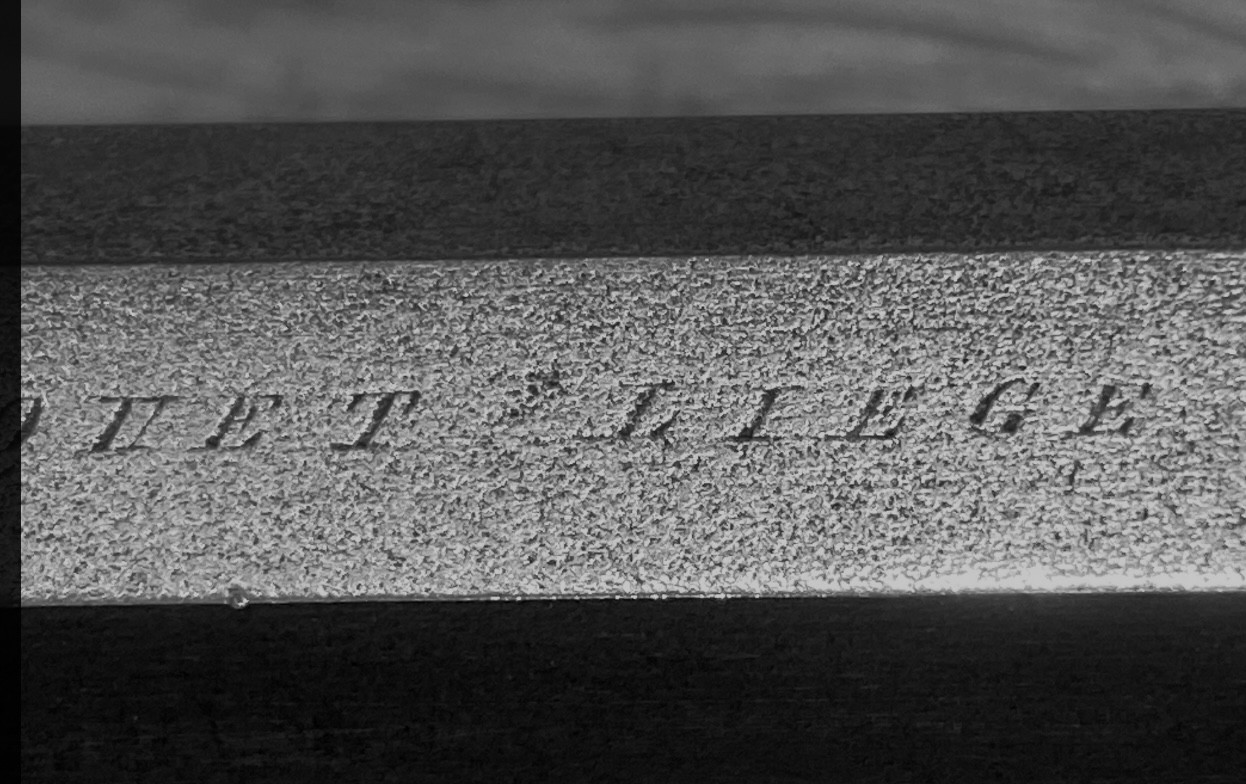


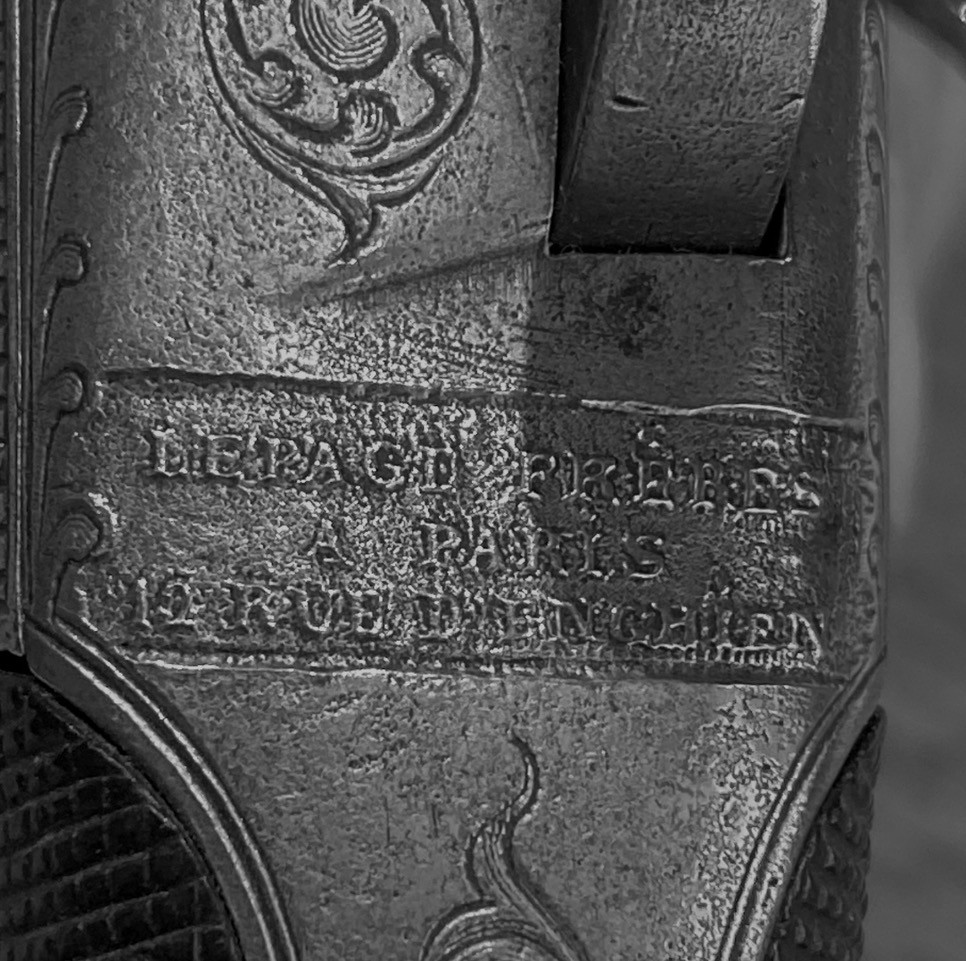
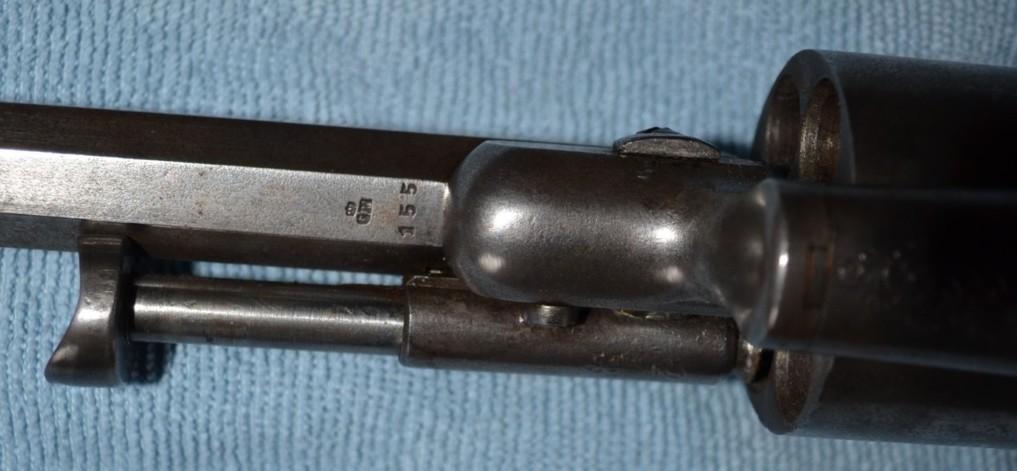
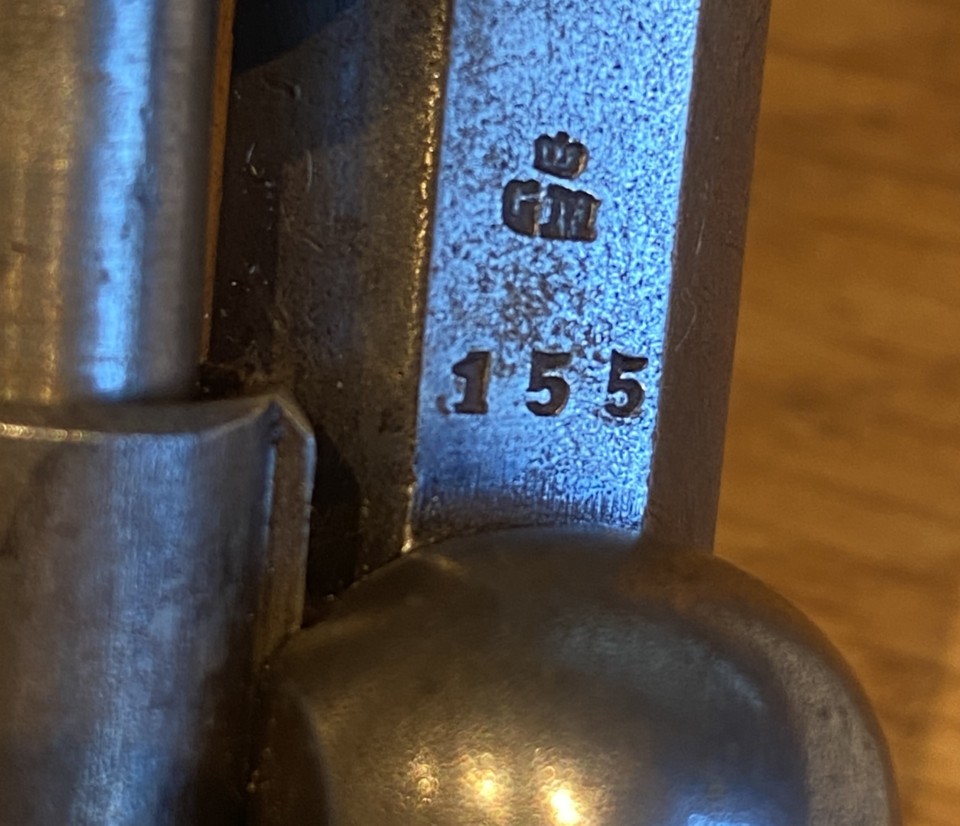
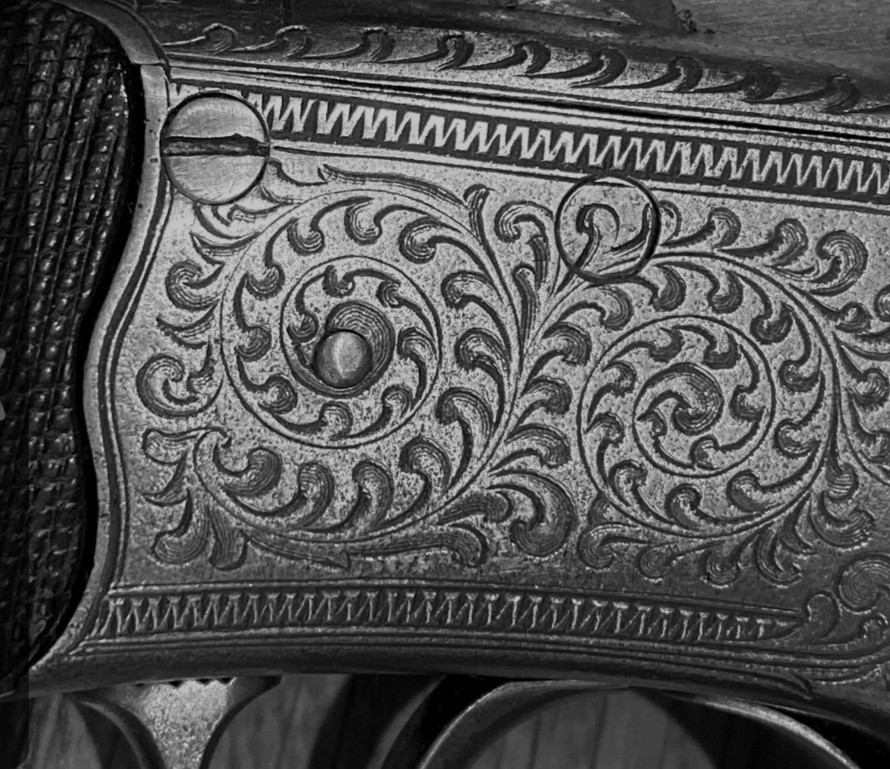
Jean Baptiste HANQUET
A pinfire revolver of house
JB Hanquet
in Liege.
One finds the traditional
ELG on star in
an oval, acceptance between 1846 and 1893.
As well as the letter
N under crown
which is the mark of the controller: valid from December 30th, 1853 to January
26th, 1877.
There is also what seems to be a
V
between two rooms of the cylinder, but the photograph is not sufficiently clear.
Company
J.B. Hanquet was registered with the
proofhouse of Liege between 1796 and 1872, which corresponds perfectly to the
period of manufacturing of this revolver, around the years 1860.
It in any
case deserves certainly a cleaning to remove rust!
GP
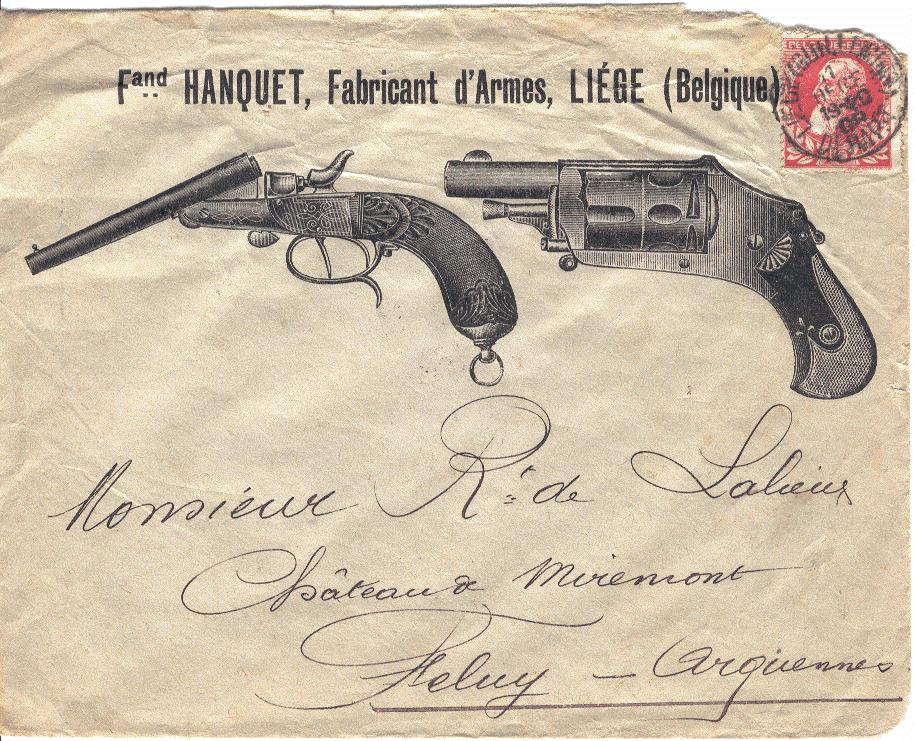
Jean Baptiste Hanquet
It is about a Belgian copy of a revolver COLT Navy 1851.
This weapon arrived on the European market during the exposure of London in 1851.
It has such a success that Samuel COLT installed a factory in England since 1853.
This factory could not only cover with it all the requests and COLT was obliged to protect its patents in Belgium, to grant licenses of manufacture to several industrialists of Liège.
Very quickly true copies appeared.
It is necessary to go up at the time of the American civil war; the states of the south crossed their provisioning developed with difficulty a local production far from equalizing the originals.
In the same time, several Belgian manufacturers tried to place their weapons near the belligerents and several thousands of false Colt were used in the two camps.
Markings on these weapons were whimsical and imitated closely or by far markings of the firm COLT
The present weapon presents on the higher side of the barrel a not very readable marking but making reference to COLT and NEW YORK
(If this mark is ADRESS COL. SAM COLT NEW-YORK CITY it acts then of a mark used by Jean Baptiste HANQUET arms manufacturer in Liege).
The two cross arrows surrounded of the letters (read so well?) J.N.C which do not correspond to any manufacturers of Liège.
The barrel is marked COLTS PATENT T1137also whimsical.
Number 1510137 wants to be to be a job number which is probably quite as whimsical as the remainder.
The only real punches are those of the proofhouse of Liege, namely:
Spangled ELG in an oval: final acceptance, of use of 1846 to 1893.
Z spangled: countermark of the controller post 1877.
This weapon was thus manufactured between 1877 and 1893.
GG
